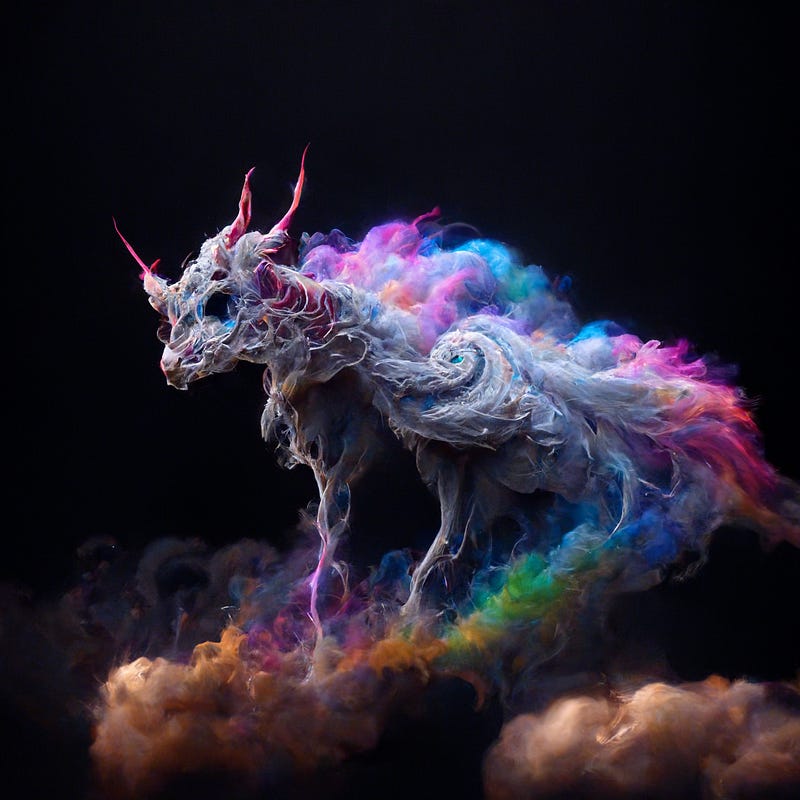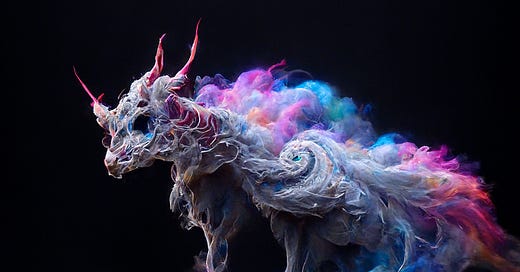AI Art Unicorns Deliver Hype (and Some Hope)
Almost every newspaper and media outlet has published a story about the rise of AI art. This hype cycle is fueled by Silicon Valley AI…

Almost every newspaper and media outlet has published a story about the rise of AI art. This hype cycle is fueled by Silicon Valley AI unicorns like freemium applications Dall.E, Midjourney, and Starry.ai. Most journalists paint a picture of technology arrived, but the output demonstrates a great deal of hype versus what is produced (this CNBC article is more grounded).
First, let’s not deny the strong work getting produced on these applications. There are some epic illustrations getting created, and in one well-reported case, award-winning art. While perhaps a proof of concept, the tools are not ready yet to become every person’s CGI tool or even a regular toolset for professional graphic designers.
Based on my own use of the applications as a content marketer and photographer, the technology is at least one or two generations away from meaningful everyday use. These image generators have to evolve for application in business and life. Right now, the generated images are often too clunky, and off-base.

Frankly, the prompting inputs into AI are too primitive for widespread adoption. And it is likely the algorithms need much more rendering training, too. I suspect a vast majority of artists will find the Silicon Valley AI art tools can suggest possibilities but lack the refinement needed to achieve their vision.
The overhype reminds me of the promises of virtual reality. Hyped for more than 20 years in various incarnations, from virtual reality to the metaverse, we have only somewhat realized the promise. Tools like Oculus have yet to become part of mainstream consumer life.
Training the AI Art Unicorns
AI Art apps are not ready for primetime because there are great challenges in training AI art apps to deliver strong outcomes. They lack the normal and expected capability that users need to refine art concepts, capabilities already established in graphic design and CGI software, for example creation tools such as Illustrator in the Adobe Creative Suite.
Inputs into these AI-fueled computer graphic generators are primitive prompts or uploading photos or graphics to suggest inputs. Redirecting the AI is primitive, too., which makes AI art very hard to harness as an everyday business graphic or art tool. For example, in the below photorealistic German Shepherd image, the midjourney AI failed to create an image with two clear front legs even after numerous revisions.

With these tools, I can only revise and upscale, or resend the prompts with a modification for a new attempt. This lottery/Bingo approach to the AI conception of art, and duct-type regeneration of concepts leaves me frustrated more often than successful.
If I had hours of free time on my hands, perhaps I could come up with the needle in the haystack prompting and revisioning necessary to create the art I need every time. But I don’t have that time to waste. Nor do I want to pay an AI art tool to get subpar results.
This inability to quickly and efficiently render art or receive more specific feedback on a rendered image is really the biggest stumbling point. There needs to be a no-code/low-code interface that allows the everyday user to retrain the AI to produce the correct image. That is the killer microapp that turns AI art from a cute novelty into a killer business and creative application.
Hope Remains for AI Art

Let’s not throw out the baby with the bath water. Some AI art images — particularly those created on Midjourney — have definitely helped me imagine some concepts. I can easily see hiring a graphic designer to fulfill them or setting up a photo shoot to capture them. Other creatives and artists can do the same, I am sure.
With a couple more generations of development and releases, these AI training tools, and input mechanisms could truly inspire and assist creatives in their daily work. On a macro level, the computer vision recognition, CGI, and ML algorithms used will improve with time with continued refinement and training. This in turn will produce better images.
In that sense, the race is on between the unicorns. Let’s hope they deliver.
Like all AI hype, the breakthrough outcome is likely a few years away, but who really knows?





